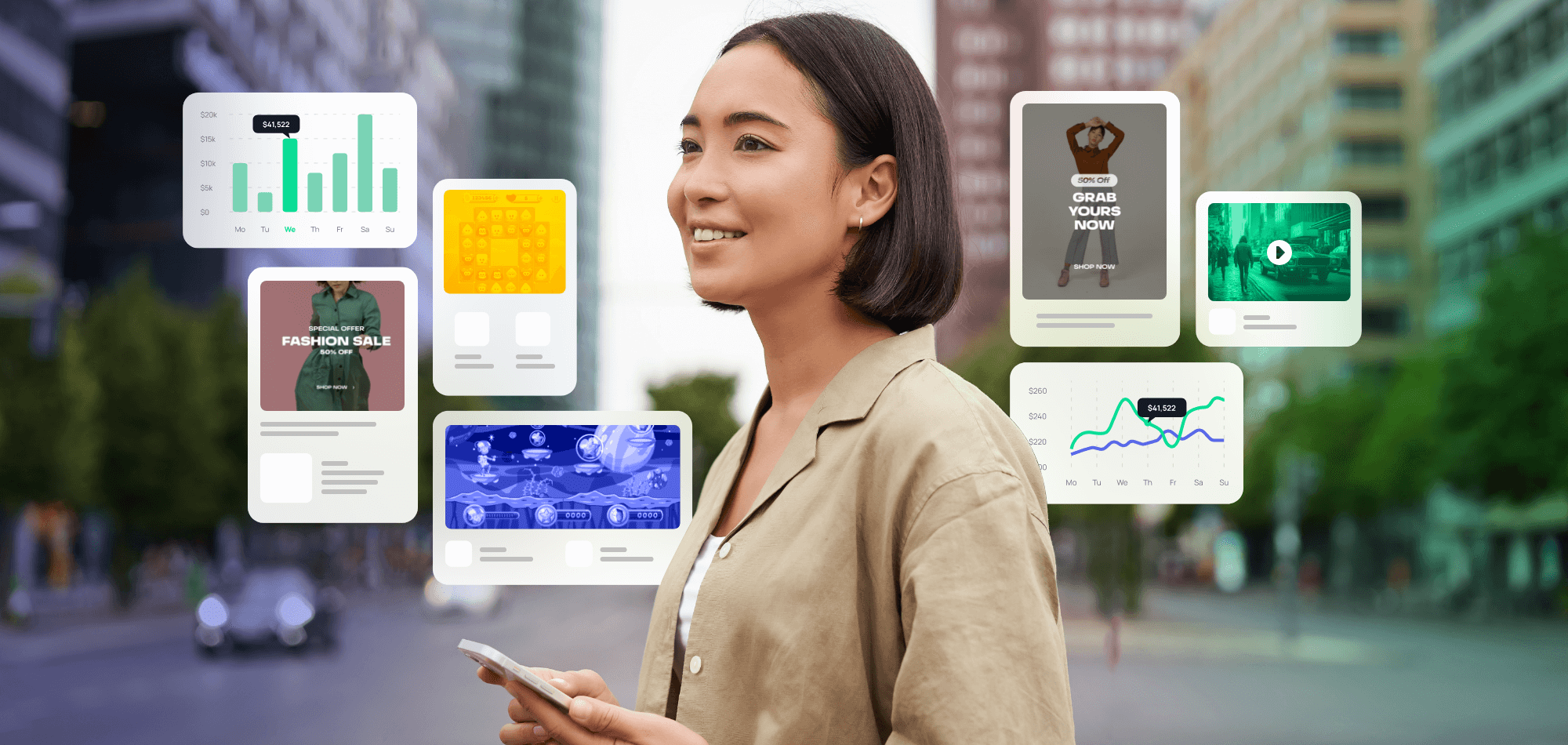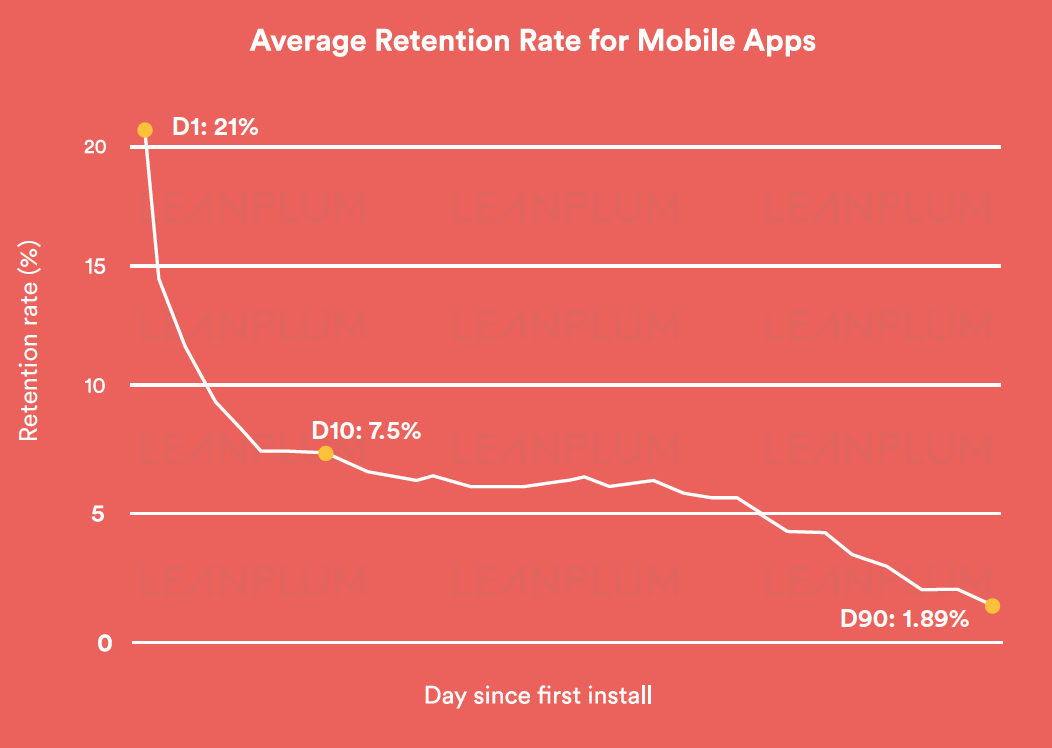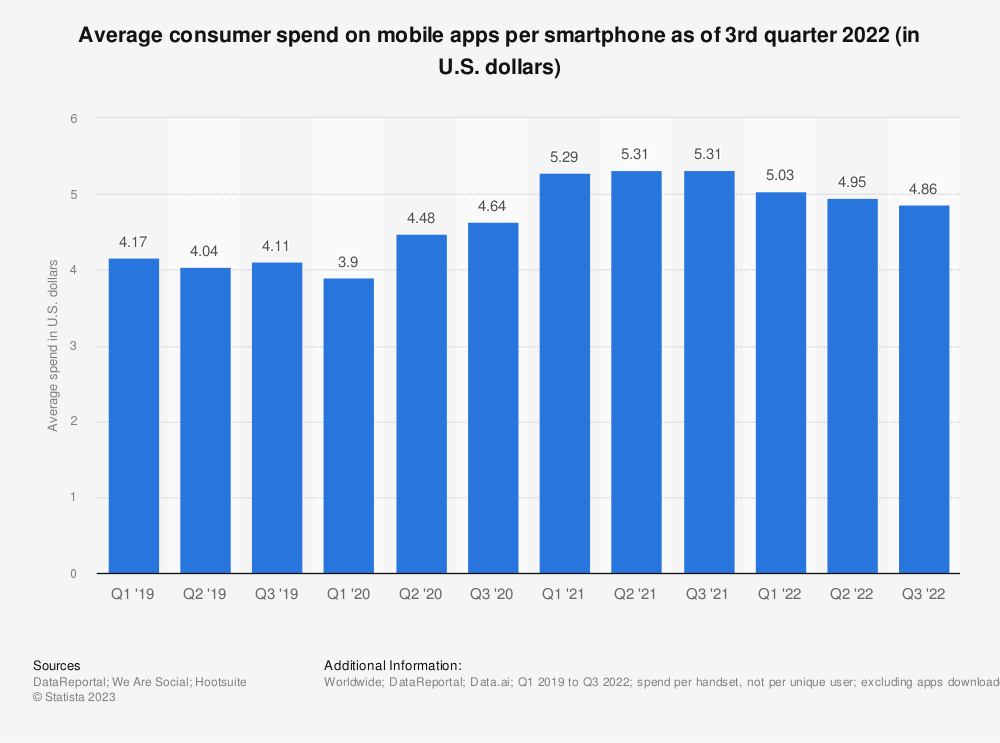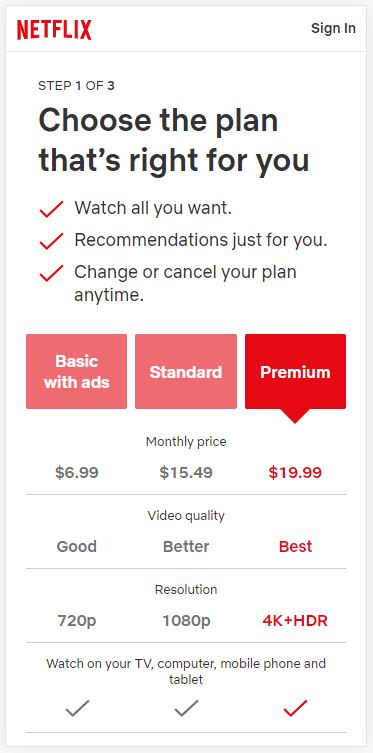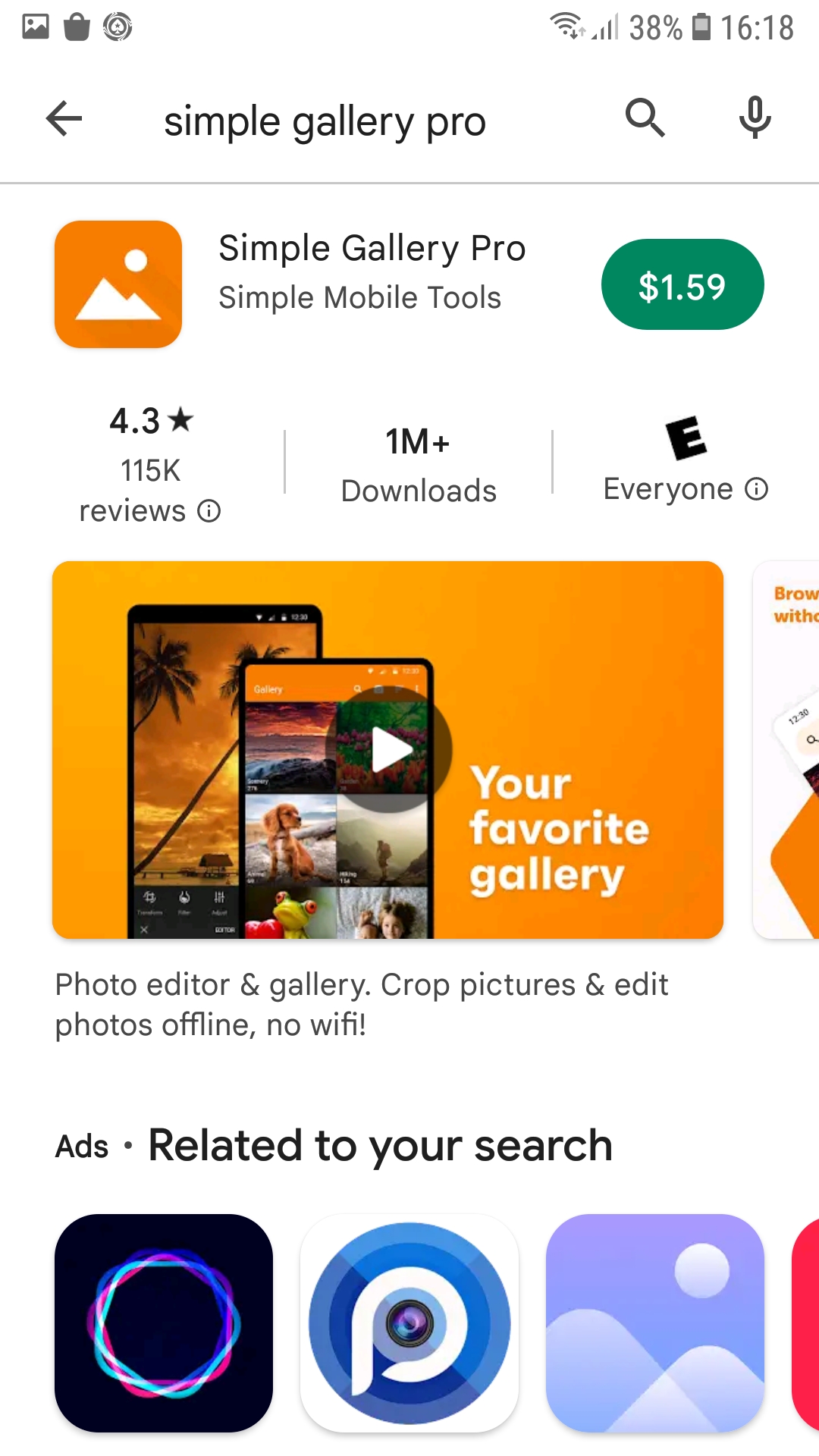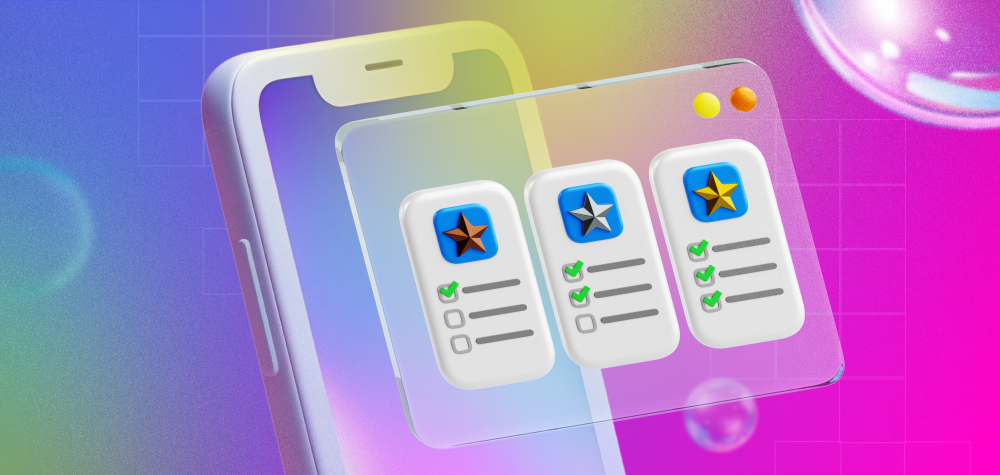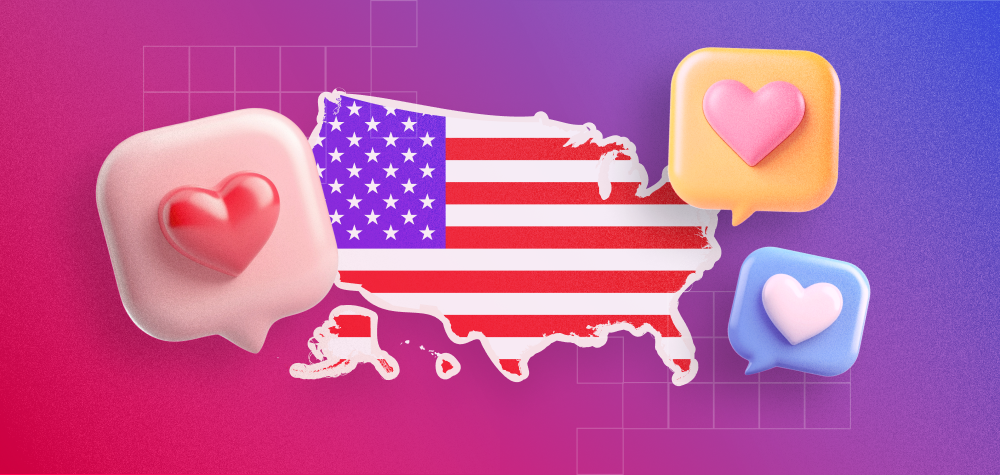Out of every 100 apps launched to the market, only 0.5% will succeed.
Yes, you read that right.
A further 1.4% won’t make a profit, and 5.8% won’t generate any revenue at all.
But app developers are a determined and visionary bunch, and in October 2022, no less than 97,000 Android apps were released in the Google Play Store. In just one month!
Despite difficult odds, the dream of launching an app that drives revenue and brings value and enjoyment to users will never die.
So we’ve put together this app monetization guide, to give app developers and publishers the best chance to generate a steady revenue stream and make their app a winner. So let’s dive into the details about how to monetize an app, and explore what is the best app monetization platform and model for your app.
What is App Monetization and Why is it Important?
Put simply, app monetization is the process of generating revenue from a mobile app. Every business needs to make money, and an app is no different. Monetizing an app means implementing strategies that enable the app owner to cover the costs of developing, operating and improving the app. Any revenue earned over those costs is profit.
There are several strategies for app monetization, including in-app advertising, in-app purchases, subscription fees and more.
App monetization is not just important; it is vital for the long-term sustainability of an app as it provides an ongoing revenue stream that covers costs and supports investment in further development. The revenue generated from app monetization can also help businesses expand their app offerings to new markets and grow their user base.
Moreover, revenue from app monetization can go towards researching and developing new features and experiences in the app, improving the overall user experience. This way, businesses can enhance their brand reputation, leading to increased customer loyalty, and more revenue.
App monetization also provides app owners with insightful first-party data about user behavior and preferences, leading to improved decision-making and better engagement strategies.
By implementing the right monetization strategies, app owners can build a sustainable revenue stream. They can also ensure the app is providing value to their user base, which is key to long term growth and success.
App Monetization Statistics To Be Aware Of
In 2020, app users spent a combined 3.5 trillion minutes on their mobile apps – and that is just Android apps!
The mobile app industry is enormous, and smartphones are only becoming more essential to every aspect of our lives. Therefore, the potential for revenue generation via app monetization is also enormous.
To put it all in perspective, here are 10 cool stats you should know about mobile app monetization:
- In 2022, global app revenue was just under $470 billion. This is expected to rise to $613 billion by 2025.
- Gaming apps are the largest generator of revenue, driving 6X more revenue than the next highest category, social media apps.
Source: Statista
3. In 2021, 82% of mobile gaming app publishers used in-app video ads, making it the most popular monetization method. For non-gaming apps, 76% used video ads. (Statista)
4. Keeping users active on an app is hard. By 3 months after installing an app, retention rates drop to less than 2%. This is a big challenge for app monetization.
Source: LeanPlum
5. In 2021, the top 3 countries for mobile app revenue were China ($56.7b), the US ($43b) and Japan ($20.7b). (Business of Apps)
6. Love wins. In 2021-2022, Bumble and Tinder were among the top 5 revenue generating apps.
7. The vast majority of apps work on the freemium model: 90% in the Apple Store and 95% in Google Play Store. Even so, they generate over $70 billion in revenue. (Digitalya)
8. The average consumer spend on mobile apps in Q3 2022 was $4.86 per smartphone.
Source – Statista
9. In Q1 2022, the conversion rate for install-to-in-app purchases for non-gaming apps was 5.5%. For gaming apps, the figure was just 2.6%. (Statista)
10. The top 3 iPhone apps in the App Store in September 2022 were Tinder, TikTok and Honor of Kings. For Android, the top 3 apps in the Google Play Store in the same period were Coin Master, TikTok and Candy Crush Saga.
App Monetization Strategies – Benefits & Best Practices
There are several monetization models and strategies, each with their own advantages and disadvantages. Choosing the right strategy, or combination of strategies, will depend on the type of app, the app content, niche, target audience, and user behavior. That’s why it is important to research your target market and competition to identify the strategy that can generate the most revenue for your specific app.
Here are 5 key strategies for mobile app monetization used by developers all over the world:
In App Purchases (IAP)
In-app purchases allow users to spend money in an app on different products, features and services. For instance, a gaming app can ‘unlock’ more game levels in exchange for a fee. A streaming app may offer purchases of additional channels or content. A personal finance app could provide an advanced budget management tool at an extra cost.
In-app purchases must be priced appropriately to make them attractive to users. It is important that they be affordable and offer clear value for money.
In addition, it’s crucial to optimize the in-app purchase process so it is comfortable and intuitive. This means designing the user interface to make in-app purchase options easy to access and understand, as well as ensuring that the payment process is secure and efficient.
Coin Master
In-app purchases – Advantages:
- High potential revenue: In-app purchases have the potential to generate significant revenue for mobile apps. This is particularly true for apps that offer a compelling value proposition to users or a unique feature that users are willing to pay for.
- Flexible pricing options: In-app purchases offer a range of pricing options, allowing developers to offer different price points for various features or content. This can help to appeal to a broader range of users and increase the likelihood of conversion.
In-app purchases – Disadvantages:
- User frustration: If in-app purchases are not implemented effectively, they can disrupt the user experience. This can lead to users abandoning the app or leaving negative reviews, ultimately reducing revenue.
- Hard to implement: Implementing in-app purchases can be complex and time-consuming, particularly for developers who are unfamiliar with the process. Additionally, in-app purchases may require extra infrastructure and support to manage, adding additional costs to the development process.
Subscriptions in Freemium Apps
Freemium apps are apps that are free to download, but offer additional features or content via purchase of a subscription. Subscriptions can be weekly, monthly or yearly. They can also be tiered, meaning that a cheaper subscription offers limited extra features, while a more expensive subscription unlocks a premium level experience.
The subscription model is an effective strategy because it allows developers to generate recurring revenue, providing an assured and consistent income. Subscriptions also give developers more flexibility in pricing; by offering different subscription tiers, developers appeal to a broader range of users and provide value according to the individual needs and wants of subscribers.
For a subscription model to be effective, it is important to provide clear pricing, offer ongoing value to subscribers, and continually optimize the user experience to encourage subscriptions and renewals.
Freemium app subscriptions – Advantages:
- Steady revenue stream: Subscriptions provide a reliable and consistent revenue stream for mobile app developers. This is particularly true for apps that offer ongoing and constantly updated value to users, such as news or streaming apps.
- User engagement: Subscriptions incentivize users to access premium features or content, which encourages ongoing user engagement. By subscribing, the user has “skin in the game” – they are invested in the app – and this helps build loyalty and boost retention rates.
Freemium app subscriptions – Disadvantages:
- User resistance: Some users may be resistant to subscription-based models, particularly if they are accustomed to accessing app services or content for free. This can make it challenging to convert users to paying subscribers and will often require additional marketing and promotional campaigns.
- Complex subscription infrastructure: Using a subscription-based model will require specialized infrastructure to support accounts and billings. Developers need access to additional tools and resources to implement app subscriptions.
In App Advertising (IAA)
In-app advertising is a method in which ads are displayed in an app to the user while they interact with the app. There are several types of in-app ads, including banner, video and interstitial ads. These ads can be targeted to the user based on their preferences or behavior, increasing the ad’s relevance and effectiveness.
A key benefit of in-app ad monetization is that it allows developers to generate revenue without directly charging the user. This is an important tactic for free or low-cost apps that don’t generate much revenue from installs and signups.
Ads should be placed strategically, such as during natural breaks in content or at the end of a game level, minimizing user frustration and avoiding the risk of users abandoning the app. By offering a range of ad types and placements, developers can increase potential revenue from advertisers while still providing a positive experience for app users.
In-app advertising – Advantages:
- Multiple revenue sources: In-app advertising comes in many forms, including banner ads, interstitial ads, and rewarded video ads, and all types of brands and businesses are looking to advertise on apps. This allows developers to maximize their monetization potential by generating revenue from multiple sources.
- Low barrier to entry: In-app advertising is a relatively straightforward process, and there are many ad networks and platforms available to developers. This makes it a low barrier to entry monetization strategy, particularly for smaller developers or those without a large budget.
In-app advertising – Disadvantages:
- User experience: In-app advertising can negatively impact the user experience, particularly if ads are intrusive or appear too frequently. This can lead to user frustration and a decrease in engagement, ultimately harming the app’s reputation and reducing revenue.
- Ad-blocking: Although less of a problem in apps than on the mobile web, some users may have ad-blocking software installed for their apps. This can significantly reduce the rates of impressions, clicks and conversions.

Source app – Paper.io 2
Ad Types & Placements
There are several ad types and placements that are common for in-app advertising. Here is a quick overview of the main types:
- Banner ads: Rectangular ads that typically appear at the top or bottom of the mobile screen. Can be static or animated.
- Interstitial ads: Full screen ads that cover the app content, usually placed during transitions in the app experience, such as between game levels. These may be static or video ads.
- Video ads: Video clips that appear at different stages of use during the app. Typically 15 to 60 seconds in duration.
- Native ads: Ads that fit in with the look and feel of a specific app, so they are less disruptive to the user.
- Return ads: Ads that are shown to app users after they return to the app having not opened it for a specified amount of time.
- Playable ads: An interactive ad that allows the user to preview a demo of an app or a game, or even play it.
- Rich-media ads: These ads combine several media formats, such as video, images and animations, creating a rich and engaging experience for the user.
Banner Banner Video Native
Paid Apps
Paid apps are apps that users must pay for upfront in order to download and use. Although most apps are based on the freemium model, paid apps can be an effective strategy when they offer significant value or a premium experience. Productivity apps or apps that offer exclusive streaming content are good examples of paid apps. The paid model may also be a good choice for mobile game monetization, if the game is particularly popular or unique to the market.
Even so, the app price must be competitive and correspond to the value the user is receiving from their purchase. Developers may consider offering a trial version of the app or a refund policy to reduce the risk for users and encourage downloads.
Paid apps – Advantages:
- Direct revenue: Paid apps provide a direct revenue stream for developers, as users pay upfront for the app. This may be a more predictable monetization source than other strategies, particularly for apps with a niche audience or a high perceived value, such as popular game apps for game monetization.
- Low reliance on other revenue sources: With a paid app, developers are not as reliant on other revenue sources, such as in-app advertising or in-app purchases. This can provide a more stable revenue stream and reduce the potential impact of changes to other revenue sources.
Paid apps – Disadvantages:
- Lower user acquisition: Paid apps can be a barrier to acquisition, especially if there are similar apps available for free or at a lower price. This can make it challenging to build a large user base, limiting the revenue potential of the app.
- Limited opportunity for upselling: The user has already paid for the app, so it is harder to upsell on additional features or content. Also, paid apps can’t justify showing ads, so combined with few upselling opportunities, paid apps are limited in their monetization potential.
Data Monetization
Data monetization is a strategy in which app developers generate revenue by selling or licensing access to the data collected by their app. This can include user data such as demographics, preferences and behavior patterns, as well as data collected by the app itself.
Data monetization has become increasingly popular in recent years, particularly as first-party data has become more valuable and businesses have sought new ways to leverage it. However, it is important for app developers to be transparent with users about their data collection and sharing practices, and to comply with relevant privacy regulations, which are only becoming stricter over time.
Data monetization – Advantages:
- Potential for high revenue: Data can be a valuable asset, and there is a significant demand for high-quality, actionable data. App developers who collect and analyze data effectively can monetize that data by selling it to interested third-party companies, which can generate significant revenue.
- Limited impact on user experience: Unlike some other app monetization strategies, such as in-app advertising, data monetization is less likely to impact the user experience. Data is typically collected in the background and doesn’t require user input, so there is less chance of users being interrupted or annoyed.
Data monetization – Disadvantages:
- Data privacy concerns: Collecting and monetizing user data can raise concerns about privacy and data protection, particularly in light of high-profile data breaches and strict privacy laws being enacted in different countries. App developers must take care to comply with applicable laws and regulations, and to be transparent with users about their data collection and usage practices.
- Limited revenue potential for some apps: Some apps may not collect enough data or generate enough traffic to make data monetization a viable strategy. In these cases, data monetization may not provide a significant revenue stream and may not be worth the effort and resources required to implement it.
How to Optimize your Monetization Strategy and Increase Revenue?
While the global revenue generated from apps is massive, competition is also huge. As time goes on, more developers are launching more apps, in every category, with no sign of letting up.
With the right approach to monetization, however, your app can maximize its potential revenue, get a slice of the enormous revenue pie, and become a success story.
Here are 5 tips that you can start implementing even today to create the best app monetization strategy:
- Optimize the app for both UX & pricing: If users have a positive experience with your app, they are more likely to engage with it and make in-app purchases or subscribe to your services. For example, optimize the First Time User Experience (FTUE) with an onboarding flow that shows the user how to take advantage of the app features. Or use automated events to encourage users to interact further with the app after taking specific actions.
At the same time, experiment with different price points, product bundles, promotions or discount offers to help determine the optimal pricing strategy for the user experience your app provides. It’s also essential to analyze the competition and market trends to ensure that your pricing strategy remains competitive and profitable in your niche.
2. Personalize the user experience: Compared to the mobile web, app behaviors are highly trackable and specific to the user, and that makes personalization a powerful strategy for improving app monetization. By providing personalized recommendations, customized content and targeted offers, you can increase the likelihood of in-app ad clicks, in-app purchases and subscriptions.
Personalization can be achieved through data analysis and machine learning algorithms that help identify user preferences and behavior. This enables app developers to target users with tailored offers and experiences that improve engagement and boost revenue.
3. Offer value to users: Any time a consumer decides to make a purchase, it is because they are receiving something of value in return. To succeed in app monetization, it’s crucial to offer value to your users, whether it be in the form of high-quality content, convenience, or regular addition of features or upgrades. When customers get tangible value from your app, they will tend to be more active on the app, which means they may click on more ads, make in-app purchases, or generate revenue in other ways.
Offering value-added services, such as premium customer support or early-bird access to new features, can encourage users to upgrade to a premium version or subscribe to an app. This strategy requires understanding user needs and preferences and providing services that meet those needs effectively.
4. Focus on retention: A huge challenge for app publishers is retaining users. It is common for users to lose interest in an app within a few weeks or months of installing it. This is deadly for app monetization. That’s why it is crucial to implement retention strategies designed to keep users engaged and excited by the app. You can use push notifications, in-app messaging, and personalized experiences to achieve this.
5. Continuously test and optimize: App monetization is an ongoing process that requires continuous experimentation and optimization. This means analyzing user behavior, testing new strategies, and optimizing existing ones to maximize revenue. Regularly reviewing your app’s performance and experimenting with new monetization strategies can help you stay ahead of the competition and generate more revenue.
Pricing will have a significant impact on effective monetization too, so it’s important to test different pricing models and analyze the impact on revenue to determine the optimal pricing strategy for your app. This may include offering different subscription tiers or in-app purchase options to appeal to a broader range of users.
By understanding and implementing these best practices, app publishers can begin optimizing their monetization strategy and over time, increase revenue generated by mobile apps.
Plus, with access to the diverse and premium advertising campaigns on the Start.io network, app publishers can tap into limitless revenue potential, and drive mobile monetization strategies that get results.
To learn more about advertising solutions, including Programmatic Advertising, read our latest blog post.
App Monetization FAQs
How to create and monetize an app?
To create and monetize an app, first develop a clear idea for the app that provides a solution to a problem or meets a need in the market. Then, design and develop the app, keeping the user experience and interface in mind. Next, choose a monetization strategy such as in-app purchases, subscriptions, or in-app advertising. Finally, market the app through app stores, social media, and other channels to reach a wider audience and generate revenue. Continuously update and improve the app to maintain user engagement and grow revenue.
How do free apps make money?
Free apps make money through various monetization strategies such as in-app advertising, in-app purchases, and freemium subscriptions. These methods generate revenue by charging users for premium features, displaying ads to users, or offering subscriptions to unlock additional content or features.
How much does it cost to advertise on an app?
The cost to advertise on an app can vary widely depending on factors such as the size and engagement of the user base, the type of ad, and the targeted audience. Advertisers typically pay for app ads on a cost-per-click (CPC) or cost-per-impression (CPM) basis, with prices ranging from a few cents to several dollars per click or impression. The exact cost of advertising on an app will depend on the specific app and the campaign goals of the advertiser.
Do apps make money without ads?
Apps can make money without ads via other monetization strategies such as in-app purchases, subscriptions, sponsorships, and data monetization. These methods generate revenue by charging users for premium content, offering exclusive features or access, partnering with brands or other apps, or selling user data to advertisers or third-party companies.
